MANUFACTURED AND DISTRIBUTED BY VICTOR ENTERTAINMENT.INC,.JAPAN [ VICP-62350 ]
Masami Kobayashi ( Nihon Ukulele Association )
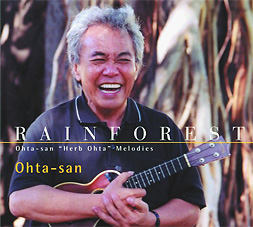 OHTA-SAN
AS COMPOSER
OHTA-SAN
AS COMPOSER
It is well-known by his fans that Ohta-san is a great ukulele player with
arepertoire that includes classical, popular, jazz, Latin music, etc. Butgreat
musicians and songwriters hold him in high regard, as well. Forinstance, Andre
Popp, the composer of "Love Is Blue," wrote "Song For Anna"for
Ohta-san after being deeply impressed with his ukulele playing. Ohta-san'srecording
of this song became a huge hit with sales of 6 million copies.
Occasionally Ohta-san will include his original songs on his recordings and
inhis live performances. Those who first hear them are often surprised by
thebeautiful melodies, stylish chords, and jazzy feel. As a result, many nowregard
Ohta-san as both a fine performer and composer. It seems that thisadditional
talent has developed not only because of the over 6000 pieces inhis repertoire
but also because of his strong background in music theory.
Though many of Ohta-san's original songs have been included in his 70 plusalbums,
Rainforest is the first one that consists solely of his originals.Since his
original tunes are mostly played and recorded instrumentally, thebeautiful
lyrics are often unknown.
In Rainforest five songs are sung by veteran singers. Nina Kealiiwahamana,Gary
Aiko, Iwalani Kahalewai and Bruce Hamada, the bassist of Ohta-san's band,were
selected. To the delight of Ohta-san's fans, publication of ACollection of
Ohta-san's Works including the 15 songs here is underway.
Which is written first, lyrics or melodies?
Ohta-san's answer to this frequently asked question is "Either comes
first."Ideally, it is best if both occur at the same time, but since
each person hashis forte and there may be a time limitation, one of them tends
to be first.As for Ohta-san, it seems in many cases he writes melodies as
they occur tohim and then he hands the tunes to lyricists to fill in the words.
Another question he is often asked is "Do you compose songs with the
ukulele?"
The answer is "No." He does not use the uke when writing songs.
Once hehas an idea for a song, its melody and chords become clear in his mind
and hedoes not have to play them with the ukulele.
LYRICISTS, JIM BELOFF AND JAMIE HOPE
Jim Beloff
Jim Beloff, jumped into the world of the ukulele after he happened to find
oneat a Los Angeles, California flea market. He was attracted to the instrumentimmediately
and eventually gave up his career as associate publisher ofBillboard magazine
to establish "Flea Market Music, Inc." with his wife, Liz.
Their company produces and sells ukulele-related books, CDs, and accessories.
They also helped introduce the "Fluke" ukulele which was designed
by Beloff'sbrother-in-law, Dale Webb. Beloff's special admiration for Lyle
Ritz andOhta-san led him to publish songbooks with their arrangements.
Beloff, himself, has also written many songs, released his own CDs and evencomposed
and performed a ukulele concerto with symphony orchestra. In 2001,when offered
an opportunity to provide lyrics to Ohta-san's melodies, Beloffreadily agreed.
On this album five of their songs are included.
Jamie Hope
Jamie Hope, has been writing lyrics for Ohta-san's songs much longer thanBeloff.
She sang on stage with Ohta-san's and wrote lyrics while she was inmusic school.
After graduation she married Larry Uchima, the band leader atKamehameha School
and retired from the world of music while continuing towrite lyrics. She is
now busy working as a new owner at "Ronnie's" restaurantin Aiea
established by her mother. Since her mother, Ronnie, was such a bigfan of
Ohta-san and Sam Kapu, she added "Ohta-san French Dip" and "Sam
KapuIce Cream" to the menu. Both are said to be very popular. Why not
try them onyour next visit there?
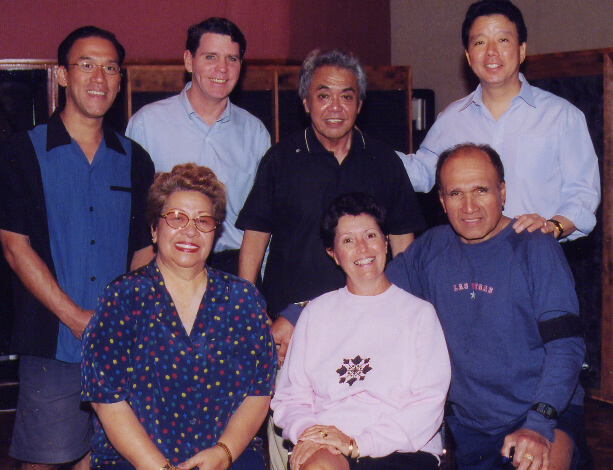 PROFILES
OF THE MUSICIANS
PROFILES
OF THE MUSICIANS
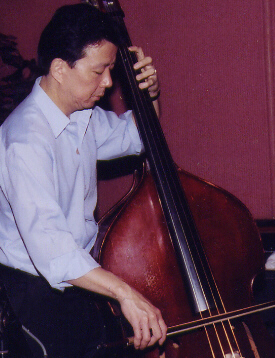 Bruce
Hamada
Bruce
Hamada
With his bass and beautiful voice Bruce Hamada has often accompanied Ohta-sanon
recent concert tours. In Hawaii, he usually plays in the "Lewers Lounge"
atthe Halekulani Hotel with pianist Jim Howard. He also enjoys playing with
afusion group at the "Black Orchid" restaurant.
Hamada was born in Honolulu in 1957. After completing a musical educationmajor
at the University of Hawaii, he studied bass, keyboard, composition,arrangement
and music production at a music school in Los Angeles where hegained recognition.
Today Hamada performs mainly in Hawaii with both visitingand local musicians,
including Ohta-san.
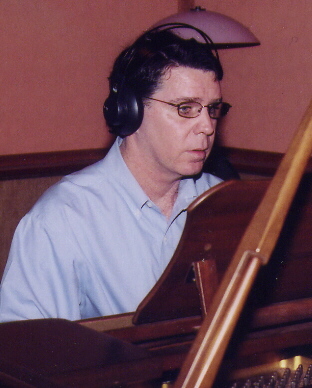 Jim
Howard
Jim
Howard
Pianist Jim Howard plays with Bruce Hamada at the Halekulani Hotel's "LewersLounge"
and has also performed on some of Ohta-san's albums. Because he cansight-read
and improvise on the spot, Ohta-san encourages Howard to ad libduring the
recordings. Here he demonstrates his improvisational skills on theelectric
piano.
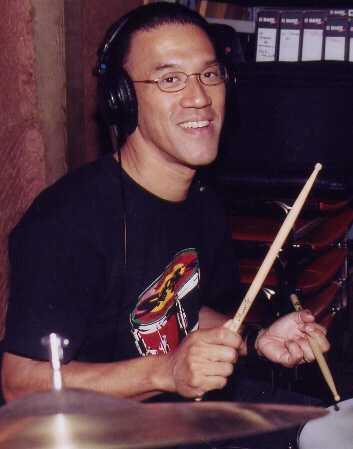 Noel
Okmoto
Noel
Okmoto
Drummer Noel Okimoto's father, George Okimoto once played the drums inOhta-san's
group. This means that now two generations of the Okimotos haveplayed with
Ohta-san. Noel was a member of famous "The Woody HermanOrchestra",
therefore, his drumming has a real jazz feel to it. In Hawaii, heis busy performing
in live concerts, on recordings of local musicians andplaying a lead role
in the annual Honolulu Jazz Festival.
Nina Kealiiwahamana
Singer Nina Kealiiwahamana is the head of a distinguished family of Hawaiianmusicians,
the Rodrigues, and is the daughter of Vickie Ii, a lead performerin the renowned
radio program Hawaii Calls and composer and kumu hula(hulainstructor). Like
her mother, Nina Kealiiwahamana also sang on Hawaii Callswith her sisters,
Lani and Lahela and brother, Boyce. Although her sistersand brother have retired,
Nina continues to sing solo with her beautiful,clear voice.
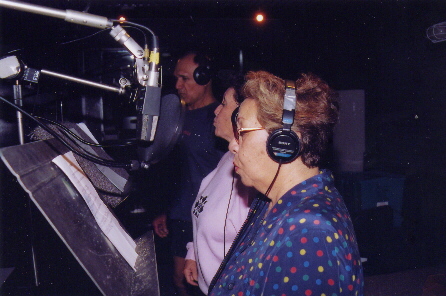 Gary
Aiko
Gary
Aiko
Gary Aiko is a veteran singer whose mother is Genoa Keawe. Genoa Keawe wasthe
leader of a group in which Nina Kealiiwahamana's mother, Vickie, was oneof
the members. Gary sings on his own albums and contributes his statelyvoice
to Genoa's recordings, as well.
Iwalani Kahalewai
Some of you might remember that there was a cute female singer who sang "BlueMuumuu"
in one of Hawaii Calls' albums. At the time Iwalani Kahalewai was inher late
teens. She has now become a veteran singer and performs regularly inconcerts
and on recordings.
ABOUT THE SONGS
- WEATHER MAN
The first song is a minor tune with a touch of nostalgia which suits Japanesepeople's taste. A weather man is a weather reporter. Here in the lyrics, theword "whether" is used as a homonym. The lyrics go, "Can you tell me weatherman, whether she'll be back again. Is your forecast sun or rain? Is ithappiness or pain?"
- LILY
Ohta-san went to Brazil with his band members on a concert tour at thebeginning of the 1970s. There, he met with two terrible misfortunes. First,at customs, the group's musical instruments worth more than $100,000, wereconfiscated. Then, Ohta-san was robbed of his passport when he was exchangingcurrency at a bank. A 17 year-old British girl ran after the robber and heldhim down, and Ohta-san's passport came back to him safely. "Lily" is the songthat Ohta-san wrote for this young lady. The lyrics were also written byOhta-san. Here in this album, Ohta-san plays the song in bossa nova style. Itis the only good memory from his Brazil tour.
- I WOULD LOVE TO MAKE YOU MINE
A song entitled "Yuukei(An Evening Landscape)" is included as the last song inthe album "Nostalgia~Heart IV~"(Sound Circus SCAC-004) recorded by "Circus," awell known Japanese choral group. The song "Yuukei" is made up of the melodyof "I Would Love To Make You Mine" by Ohta-san and lyrics by Ousuke Kanou, amember of Circus. Ohta-san also attended the recording. Both Jamie Hope'sEnglish lyrics and the Japanese version by Ousuke Kanou perfectly match themelody. Personally this is one of my favorites.
- THE FINER THINGS
This tune is a love song with lyrics written by Jim Beloff. In his sweet,smooth voice Bruce Hamada sings, "The finer things, so I once thought, weremade of gold. A fancy car, The private plane, A house in Spain. They're notwhat I thought. Yes, I have found, something finer, than any thing can be.That is love, the finest thing, you and me."
- WHEN I'M NOT AROUND
This song has lyrics which read, "I've loved you now for seven years,... I'mleaving now,... What you goin' to do when I'm not around." 30 some years agowhen Ohta-san held a workshop in Punahou, a boy appeared with an introductionfrom a famous poet. He was the then 16-year old Vick Schonberg, the lyricistwho wrote the words of this song. The lyrics he wrote were all so beautifulthat at first Ohta-san thought the boy had copied someone else's lyrics.
Afterwards, many songs with Schonberg's lyrics and Ohta-san's melodies came tobe recorded including "Summer Nights"(sung by Linda Green).
- RAINFOREST WALTZ
Ohta-san often uses the recording studios of Audio Resource. There are twostudios, one in Honolulu and the other in a mountain in Nuuanu. The Honolulustudio is used mostly for recording and the Nuuanu studio is mainly used formixing.
In August, 2000, at the Nuuanu studio people gathered to choose one song froma number of Ohta-san's originals for the shooting of a TV program PEACEWAVE~The Ukulele And The Boy. This was to commemorate the opening of a new TVstation(BS-i), directed by Hiroyuki Nakano and starring MakotoNishikido(Johnnies, Jr.). As it turned out this song was chosen, but at thetime it had no title. The title "Rainforest Waltz" was suggested by studioowner Tony Hugar based on where the studio was. This witty title is adoptedfor the album title as well. It is considered most suitable as the title fora collection of Ohta-san's beautiful melodies.
- PUA LOKELAU
Among the works of a blind singer-composer of Hawaiian music, Johnny Almeida,there is a song entitled "Green Rose Hula." In spite of its English title,the lyrics are all in the Hawaiian language. The lyrics go, "No ka pualokelau ke aloha, no ka u`i kau i ka wekiu." "Lokelau" is the Hawaiian wordfor "green rose"(a kind of rose originated in China of which petals aregreen.) However, the "Pua Lokelau" here has nothing to do with JohnnyAlmeida's tune and was written by Katherine Roseguo, a white lady. Even thoughshe is a Caucasian, she is adept in the Hawaiian language. She is nowteaching science to children on the island of Hawaii using only the Hawaiianlanguage.
Since this song was written back in 1981, Ohta-san and his son Herb Ohta, Jr.have played it on many occasions and Herb Orta Jr. has recorded this melodyfor his latest solo album. However, this is the first time that the lyricsare being sung. And, for lead vocalist Gary Aiko and two others, this wastheir first time to sing it. All three, who were moved by the melody and thelyrics, said they would like to include the song in their repertoire.
- THE FRENCH CAFE
This song is a minor tune similar to "Weather Man" with a melody which touchesour heartstrings. A man is waiting for his sweetheart at a French cafe,their usual meeting place. During the song he realizes that their affair isover but toasts their rendezvous nonetheless. Jim Beloff's lyric writing iswell displayed here.
- THERE IS SOMEONE NEW IN MY LIFE
The lyricist of this song, Dennis Couzijn is a Dutchman. Ohta-san met him inHawaii and asked him to write lyrics for some of the melodies he had written.This is one of the songs they wrote together. The song depicts the emotion ofa man(or a woman) who met "someone new in his/her life" Since the sexes ofthe main characters are unclear with the words "you" and "I," the song can besung by either a man or a woman.
- KAMAAINA KEIKI
One of the great Hawaiian songwriters, Robert Alex Anderson wrote classicssuch as "Malihini Mele," "Haole Hula," "Lovely Hula Hands," "On A CoconutIsland" and "Mele Kalikimaka." For most of the songs, he wrote both melodiesand lyrics himself. Anderson, who took a fancy to the melodies Ohta-sanwrote, published "collaborated works" with his lyrics. This "Kamaaina Keiki"along with "Ukulele Isle" (which became the title of one of Ohta-san'salbums(Decca DL-74704)) are such "collaborated works."
Here in this track, Nina Kealiiwahamana takes the lead, and Gary Aiko andIwalani Kahalewai join to sing as a trio. "Kamaaina" means native-born, and"keiki" is a child. The lyrics read, "When I sing Hawaiian songs you don'tknow what it's all about, unless you're a Kamaaina Keiki Hawaiian like me."
- THOSE EYES
Female lyricist, Jamie Hope, weaves a "feminine sensation" into the words ofthis song. Ohta-san was saying, "I don't understand the feeling of 'up toyou'(laughter)" quoting the lyrics which go, "One look at you, and I knew we'dbe together, Next look is up to you...." Anyway, this song depicts a scenewhere two lovers look into each other's eyes.
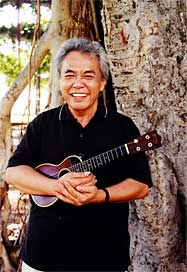 DANCING
IN THE RAIN
DANCING
IN THE RAIN
Another song with Jamie Hope's lyrics. "Dancing In The Rain" is about twolovers with lyrics which read, "Tell me how, you've got me dancing in therain." Though it has nothing to do with this instrumental performance, thereis a part in the lyrics where Ohta-san as a senior changed some words.
Against an original line written by Hope, "Please love me more, come to mydoor...," Ohta-san said if the two are really in love with each other, itcannot go in that subdued manner. It is reported that he changed the line to"Please love me more, run right through my door..."
- LINGER IN YOUTH
Bob Alan who wrote the lyrics of this song has been on friendly terms withOhta-san for a long time. Alan also wrote the lyrics of "Living In Dreams"which is included on Song For Anna released in 1976. Bruce Hamada sings thesong which goes, "Little boys chase little girls,*an ice-cream after school.
Adventures ev'ry trip,... Linger in your youth awhile and keep on livingdreams, 'cause you won't see 'till it's too late, your dreams there're gonewith age."
- LAZY DAY
This "Lazy Day" is a waltz which has an atmosphere similar to Burt Bacharach'ssongs. Since its bar structure is 18+18+16+18, it seems to be a hard song forthose who do improvisation. The lyrics go, "Yes, I love a lazy day, here withyou, feeling like two contented cats asleep in the sunshine. Hang around,...nothing here that we have to do."
- HAWAII
The last song of this album is "Hawaii" which can be called Ohta-san'smasterpiece. It is often performed as the closing tune of his concerts. Itis also known as a memorial song of Yujiro Ishihara, a Japanese actor whowanted to use it as the theme music for his next movie but passed away beforeit was made.
This song has been recorded a number of times on Ohta-san's albums and videos.While most of the recordings are of Ohta-san's ukulele instrumental, in thisalbum it is sung by veteran singer, Nina Kealiiwahamana. Since the originalkey was a bit too low for Nina's vocal range she sang it with a melody shearranged. This arrangement is very innovative, and there may be some singerswho will want to cover the song in this manner.